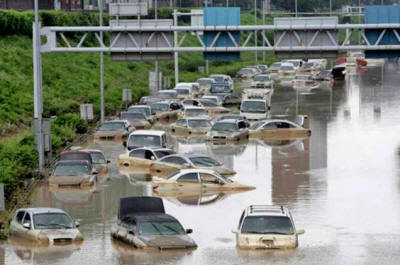|
|
|
by Mark Sircus 29 July 2011 from IMVA Website
It is not often that one is confirmed as strongly as I have been in the past two days.
I stuck my neck out starting three years ago about global cooling before just about anyone and I have continued to stick my neck out about many different issues.
First we have NASA blowing a hole a mile wide in Al Gore and the rest of the global warmer movement telling us: (do not miss two special notes at the bottom of this post about confirmations about our deteriorating financial situation as well as new visuals to see on the Antarctic Circle)
These findings will dramatically alter the global warming debate exposing yet again that the central premise of alarmist global warming theory that carbon dioxide emissions are warming the planet quickly is wrong.
The “NASA satellite data," reported in a peer-reviewed scientific journal, show a ‘huge discrepancy’ between alarmist climate models and real-world facts.
Then we have scientists and Senators telling us that the United States is on a pace in 2011 to set a record for the cost of weather-related disasters and the trend is expected to worsen as climate change continues.
As of June, the United States has seen eight weather disasters exceeding $1 billion each in damage, and the annual hurricane season has hardly begun, said Kathryn Sullivan, Assistant Secretary of Commerce for Environmental Observation and Prediction and NOAA’s Deputy Administrator.
The costs of weather-disaster damages
have climbed past $32 billion for 2011, according to
NOAA estimates.
Bizarre reports of weather extremes continue to come in from all over the world.
As the northern hemisphere bakes in
record-breaking heat the southern half of our earth is suffering
record breaking cold. In South Africa, for instance they have just
experienced one of the worst storms and extreme weather conditions
with snow and ice in areas never seen before. A week of the COLDEST
freezing weather in 100 years has created a national emergency with
roads closed everywhere with thousands of motorists stranded.
Sami K. Solanki of the Max Planck Institute for Solar System Research announced that he believes the Sun is leaving its 50-60-year-long grand maximum of the second half of the 20th century. He had said previously that the Sun was more active in the second half of the 20th century than in the previous 8,000 years.
Solanki holds that a repeat of the Dalton Minimum is most likely, and that the earth is in for an unusually deep and long solar minimum. The Dalton Minimum was a period of low solar activity, named for the English meteorologist John Dalton, lasting from about 1790 to 1830.
Like the Maunder Minimum and Spörer Minimum, the Dalton Minimum coincided with a period of lower-than-average global temperatures. The Oberlach Station in Germany, for example, experienced a 2.0° C decline over 20 years.
The year without a summer, in 1816, also
occurred during the Dalton Minimum.
Of all the thousands of pollutants we put in the air, CO2 is the least dangerous to our health and to our civilization.
The truth, no matter how far it gets distorted, eventually shines through.
They can hide elephants in living rooms
and even radiation contamination from the worst nuclear disaster in
human history for only so long. In the end it really does not matter
what we think. The truth of reality is as hard as diamonds and it
will eventually overwhelm people’s cherished assumptions.
When we can slow and then stop the flow of thoughts in our minds (something we learn to do after years of dedicated meditation), then in that stillness another level of perception opens up that is more dependable.
Intuition is defined as knowing without knowing how we know. It’s our hotline to the universe.
Of course it takes great training to
develop the muscles of our intuition to the point where we can
depend on it and use it as our main guidance system.
Unfortunately we also received confirmation on the financial and economic front for my dire predictions that things are worse than we think.
Today’s news reported that:
The report also showed the current slowdown began earlier and has been deeper than previously thought, with growth in the first quarter advancing at only a 0.4 percent annual pace.
The data indicated the economy began
slowing in the fourth quarter of last year before high gasoline
prices and supply chain disruptions from
Japan’s earthquake had hit,
suggesting the weakness is more fundamental and less temporary than
economists had believed.
At 7:10 this morning (29 July 2011) you can see the most unusual thing pop up over the horizon at the Neumayer Station near the Antarctic Circle.
For more information about the video cam there see Unbelievable Events in Antarctica.
|



